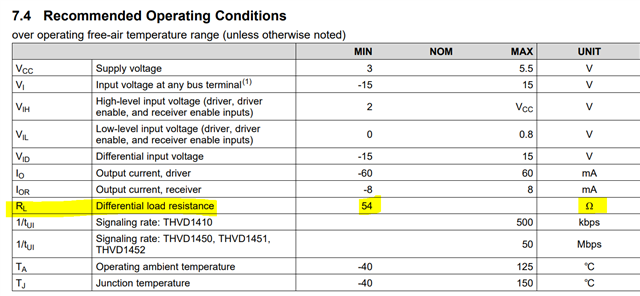Hello!
I am a bit confused about the termination resistor requirement for THVD1410.
The standard for RS485 is 120Ohm.
In the datasheet though, the recommended value is 54Ohm.
With a 120 Ohm termination resistor I am seeing 4V at the outputs (D and R).
That is an issue since our MCU only supports up to 3.3V.
Should I switch to 54 Ohms?
-
Ask a related question
What is a related question?A related question is a question created from another question. When the related question is created, it will be automatically linked to the original question.

